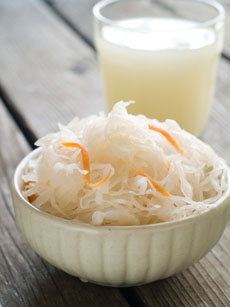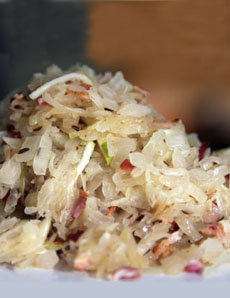WHAT IS THAI ICED TEA?
Thai iced tea, known as cha-yen (cha is the word for tea), is served in Thailand, Vietnam, elsewhere around the Pacific Rim and in Thai restaurants in the West and elsewhere around the world.
It’s made from strong-brewed black tea and sweetened condensed milk, which adds body and creamy mouthfeel.
The brewed tea can be enhanced with spices, such as cardamom, clove, nutmeg, star anise, and tamarind. If you like chai tea with milk and sweetener, you’ll equally like Thai iced tea.
For visual appeal, the deep amber tea and white condensed milk are swirled together or layered. The drink can be topped off with evaporated milk, coconut milk, half and half, or whole milk.
The countries where it’s most popular are known for hot, steamy summers. Thai iced tea is a welcome refreshment—and a complement to spicy food. If your neck of the woods is as hot and steamy as ours is, it’s time to try the recipe.
> The different types of tea.
> The history of tea.
RECIPE: THAI ICED TEA
Ingredients For 6 Servings
3/4 cup black tea leaves (approximately 3 ounces)
Optional spices: cardamom, ground tamarind, nutmeg, star anise, or others (cinnamon works for us), to taste
6 cups boiling water
1/2 cup sugar (or equivalent noncaloric sweetener)
1/2 cup sweetened condensed milk
1 cup evaporated milk to top (you can substitute coconut milk, half-and-half, or whole milk)
Ice
Preparation
1. STEEP the tea leaves (and any optional spices) in boiling water for 5 minutes. Strain out the tea leaves. Using an infuser (tea ball) makes this step easier.
2. STIR in the sugar until dissolved while the tea is still hot; then stir in condensed milk.
3. COOL to room temperature or ideally, chill in the fridge.
4. ADD ice to tall iced tea glasses and pour in tea mixture until glasses are roughly 3/4 full. Slowly top off glasses with evaporated milk.
Variations
If you find yourself in the Pacific Rim, you can have what Americans think of as iced tea.
Dark Thai iced tea (cha dam yen) is simple iced tea without milk, sweetened with sugar.
Lime Thai tea (cha manao) is dark Thai iced tea flavored with lime. Mint may also be added.
If you’re looking for unsweetened iced tea in the Pacific Rim, you may be out of luck. It’s the birthplace of sugar.
A BRIEF HISTORY OF SUGAR
Sugar is native to Southeast Asia, with three species seeming to have originated in two locations: Saccharum barberi in India and Saccharum edule and Saccharum officinarum in New Guinea.
Originally, people chewed on the raw sugar cane stalks to enjoy the sweetness. Refined sugar appears around 500 B.C.E. when residents of what is now India began to make sugar syrup from cane juice. They cooled it to make crystals that were easier to store and transport. These crystals were called khanda, which is the source of the word candy.
Indian sailors carried sugar along various trade routes. In 326 B.C.E., Alexander the Great and his troops saw farmers on the Indian subcontinent growing sugar cane and making the crystals, which were called sharkara, pronounced as saccharum.
The Macedonian soldiers carried “honey-bearing reeds” home with them. But sugar cane remained a little-known crop to most Europeans for the next thousand years, a rare and costly product that made sugar traders wealthy.
In the 12th century, Crusaders brought sugar back to Europe from the Holy Land, where they encountered caravans carrying the “sweet salt.” Venice began to produce sugar in Lebanon to supply Europe, where honey had been the only available sweetener. By the 15th century, Venice was the chief sugar refining and distribution center in Europe.
Although sugar arrived in Europe around 1100, it was very expensive and not widely used except by the wealthy, who used it both to sweeten foods and as a medicine.
In the 16th century, the price of sugar, though still high, was affordable by the middle class. By the mid-16th century, recipes for baked goods and confectionery showed sugar being used freely.
And, many experts today would say, it is now used far too freely.
HOW MANY TYPES OF SUGAR HAVE YOU HAD?
Check out the different types of sugar in our Sugar Glossary.
|
|

[1] The milky swirl of Thai iced tea is a visual treat (photo © Arbor Teas).

[2] Sweetened condensed milk is added to the top of the tea, where it swirls down into the glass, creating arresting visuals (photo © Other Things | CC BY-NC-SA 2.0 License).
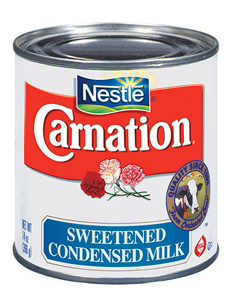
[3] Sweetened condensed milk is a key flavor in Thai iced tea, although coconut milk can be used as a non-dairy alternative (photo © Nestlé).
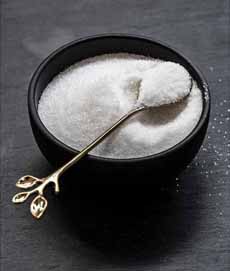
[4] There’s lots of sugar in Thai iced tea. Make your own to control the amount or use a sugar substitute (photo © Hannah Kaminsky | Bittersweet Blog).
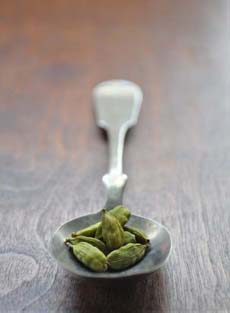
[5] Cardamom pods are a favorite spice to brew in Thai iced tea (photo © Farmgirl Gourmet).
|









